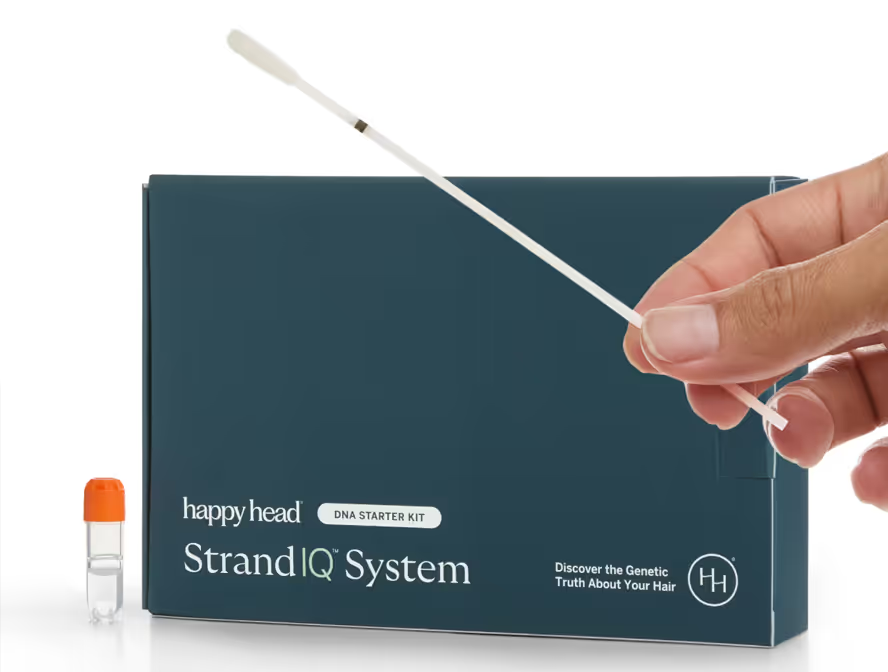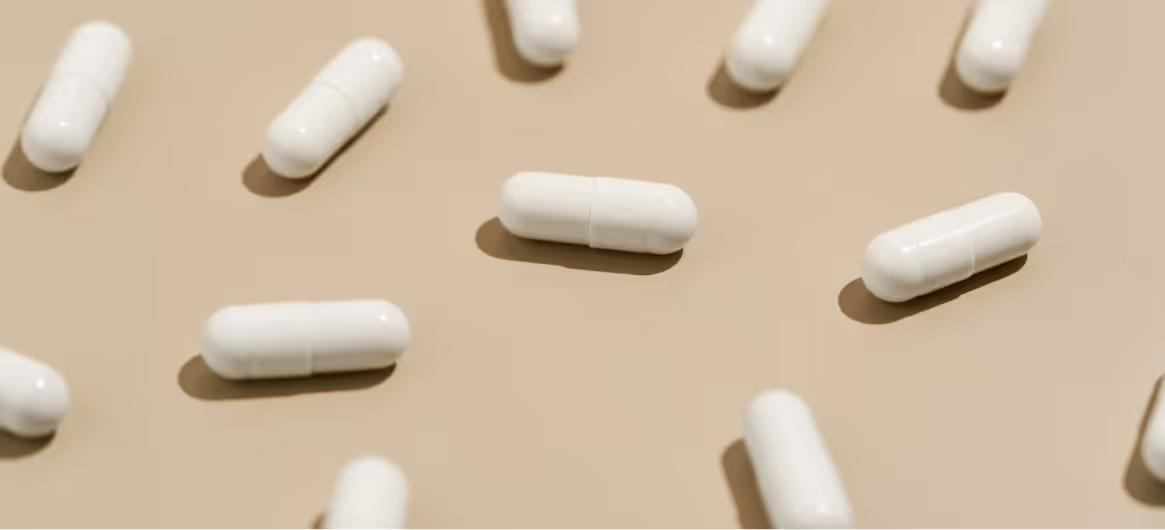Scalp skin may be among the thickest on your body, but that doesn’t mean it’s immune to damage. As we age, our scalp naturally becomes thinner and more fragile. Lifestyle and environmental factors such as sun exposure, hormonal shifts, and even long-term use of certain medications—such as corticosteroids—can accelerate this thinning process. However, for many people, genetics also play a key role in scalp skin thinning, influencing how quickly the skin weakens and becomes sensitive.
Fortunately, by understanding your risk factors and your genetic predisposition, you can take proactive steps to protect your scalp’s health, retain moisture, and maintain a strong foundation for healthy hair growth.
What Causes Thin Scalp?
Thinning scalp skin isn’t caused by one single factor alone. Instead, it’s the result of both genetic and environmental influences, often working in tandem:
- Aging: As collagen and elastin production slows with age, skin naturally loses its thickness and elasticity.
- UV Exposure: Long-term sun exposure weakens scalp skin by damaging collagen fibers and promoting oxidative stress.
- Medications: Prolonged use of oral or topical corticosteroids can degrade skin strength and increase blood vessel fragility.
- Genetics: Some individuals are genetically predisposed to having thinner or more fragile scalp skin due to specific gene variants related to skin structure and repair.
How to Care for a Thinning Scalp
Your approach to care should reflect your individual risk level, which may be influenced by both lifestyle and genetics. Below are tiered recommendations to help protect and strengthen fragile scalp skin:
Low Risk: Maintain a Healthy Foundation
If your Happy Head StrandIQ™ genetic analysis has identified you as being at low risk for thin scalp, simple measures may be the best place to start to boost your scalp health.
- Sun protection
Prolonged UV exposure damages collagen in the scalp, so prioritize protective items like hats and sunscreen to limit exposure when spending time in the sun. - Moisture support
Consider adding moisturizing shampoos and conditioners to your haircare routine in order to keep scalp skin hydrated and build resilience. - Nutritional boost
Prioritize consuming daily recommended supplements of nutrients like protein, biotin, zinc, B-vitamins, and vitamin E support skin structure and repair.
Medium Risk: Take Preventative Action
If you’ve been identified as being at a moderate risk for thin scalp—or if your scalp feels more brittle, fragile, or injured than usual—then more intensive measures may be necessary.
- Sun avoidance
Try to stay in the shade, and wear a hat if you’ll be outside for long periods. - Hydration ritual
Upgrade your routine with deep-conditioning treatments to enhance scalp moisture retention. - Stimulate circulation
Massaging your scalp may help improve blood flow, which can promote thicker, healthier skin.
High Risk: Living With Fragile Scalp
If your StrandIQ analysis identified you as being at a higher risk of naturally thin scalp, it may be time to seek professional help on how to protect it through healthy routines and minimize additional environmental factors.
- Deep conditioning
Use a leave-in conditioner daily, and apply a hydrating hair mask weekly to restore moisture levels. - Therapeutic touch
Get regular scalp massages to enhance circulation and support skin elasticity. - Professional Guidance
If you notice visible thinning or sensitivity, a Happy Head dermatologist about interventions that may help slow scalp aging.
Building a Resilient Scalp: A Path Forward
Scalp thinning doesn’t happen overnight, and neither does recovery. But by learning your personal risk factors—genetic and environmental—you can adopt a customized approach to scalp health that improves comfort and supports stronger hair over time.
Hydration, protection, and proper nutrition form the foundation of any successful care plan. And if you’re looking for personalized scalp care, platforms like Happy Head offer tailored regimens designed around your hair and skin biology—making targeted care easier and more effective.
Resources
StrandIQ SNP Marker Count: 5
StrandIQ Genes for Trait:
DSP, DSP-AS1, LTA, SNRNP48, TNF
References:
Chong, A.C., Visitsunthorn, K., Ong, P.Y. (2022). Genetic/environmental contributions and immune dysregulation in children with atopic dermatitis. Journal of Asthma and Allergy, 15, 1681–1700. PMID: 36447957.
Favre, B., Begré, N., Borradori, L. (2018). A recessive mutation in the DSP gene linked to cardiomyopathy, skin fragility and hair defects impairs the binding of desmoplakin to epidermal keratins and the muscle-specific intermediate filament desmin. British Journal of Dermatology, 179(3), 797–799. PMID: 29878302.
Green, K.J., Jaiganesh, A., Broussard, J.A. (2019). Desmosomes: essential contributors to an integrated intercellular junction network. F1000Research, 8, F1000 Faculty Rev-2150. PMID: 31942240.
Lee, J.Y.W., McGrath, J.A. (2021). Mutations in genes encoding desmosomal proteins: spectrum of cutaneous and extracutaneous abnormalities. British Journal of Dermatology, 184(4), 596–605. PMID: 32593191.
McAleer, M.A., et al. (2015). Severe dermatitis, multiple allergies, and metabolic wasting syndrome caused by a novel mutation in the N-terminal plakin domain of desmoplakin. Journal of Allergy and Clinical Immunology, 136(5), 1268–1276. PMID: 26073755.
Polivka, L., et al. (2018). Epithelial barrier dysfunction in desmoglein-1 deficiency. Journal of Allergy and Clinical Immunology, 142(2), 702–706.e7. PMID: 29705242.
Stappers, M.H., et al. (2014). Polymorphisms in cytokine genes IL6, TNF, IL10, IL17A and IFNG influence susceptibility to complicated skin and skin structure infections. European Journal of Clinical Microbiology and Infectious Diseases, 33(12), 2267–2274. PMID: 25022448.
Whittock, N.V., et al. (2002). Compound heterozygosity for non-sense and mis-sense mutations in desmoplakin underlies skin fragility/woolly hair syndrome. Journal of Investigative Dermatology, 118(2), 232–238. PMID: 11841538.
This content, including StrandIQ™ DNA analysis reports and any Happy Head products and/or services referenced therein, is for informational and cosmetic purposes only. It is not intended to diagnose, treat, cure, or prevent any disease. This content does not constitute medical advice and should not be used to make healthcare decisions. References to prescription treatments are educational in nature. Always consult a licensed healthcare professional for any medical concerns or treatment decisions.








.avif)

